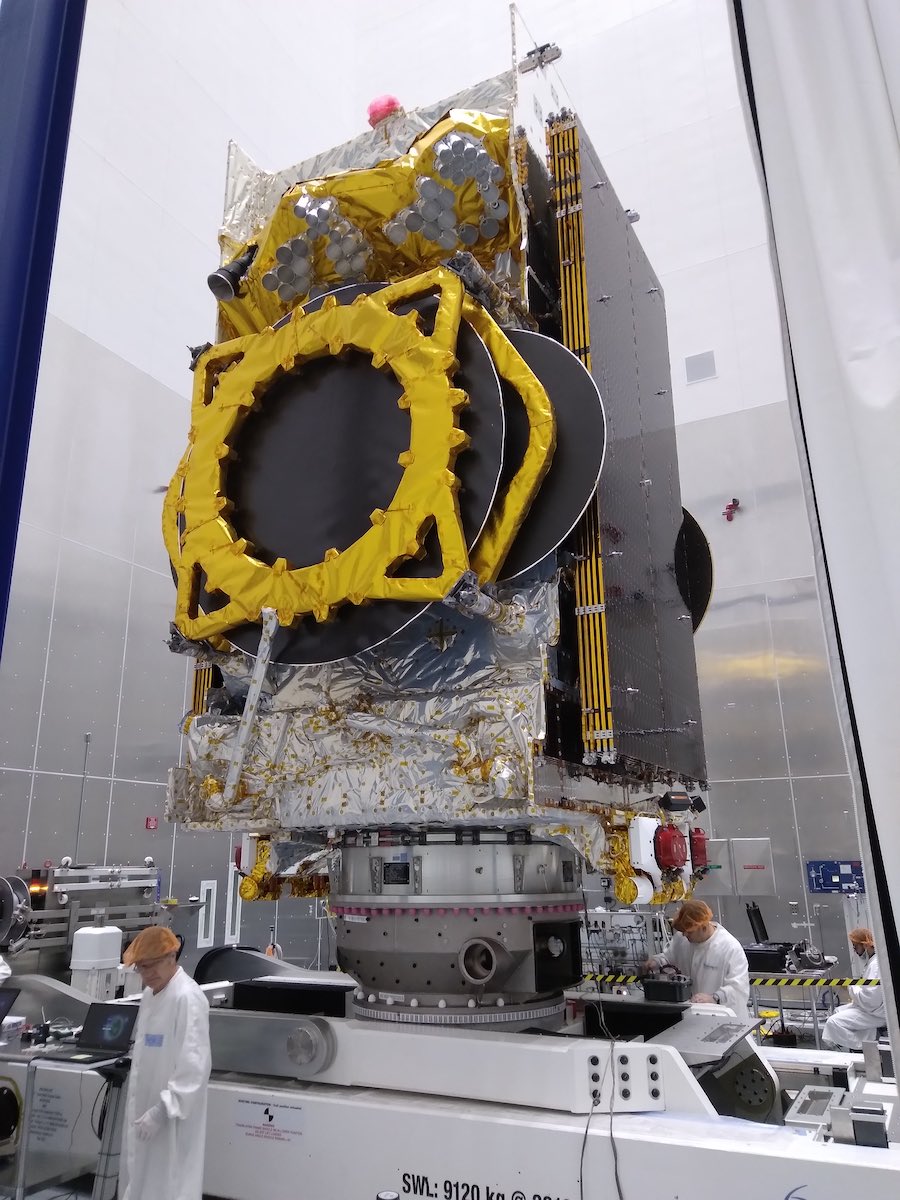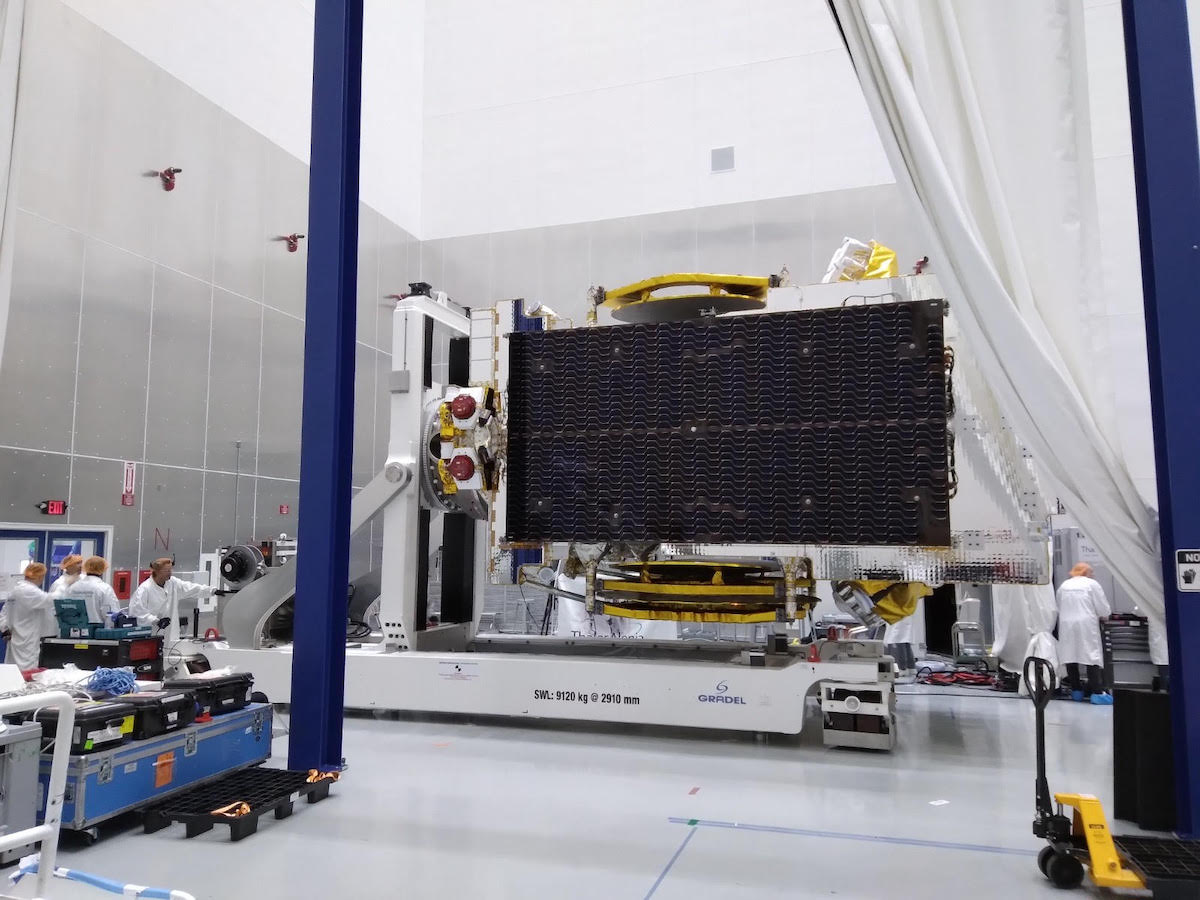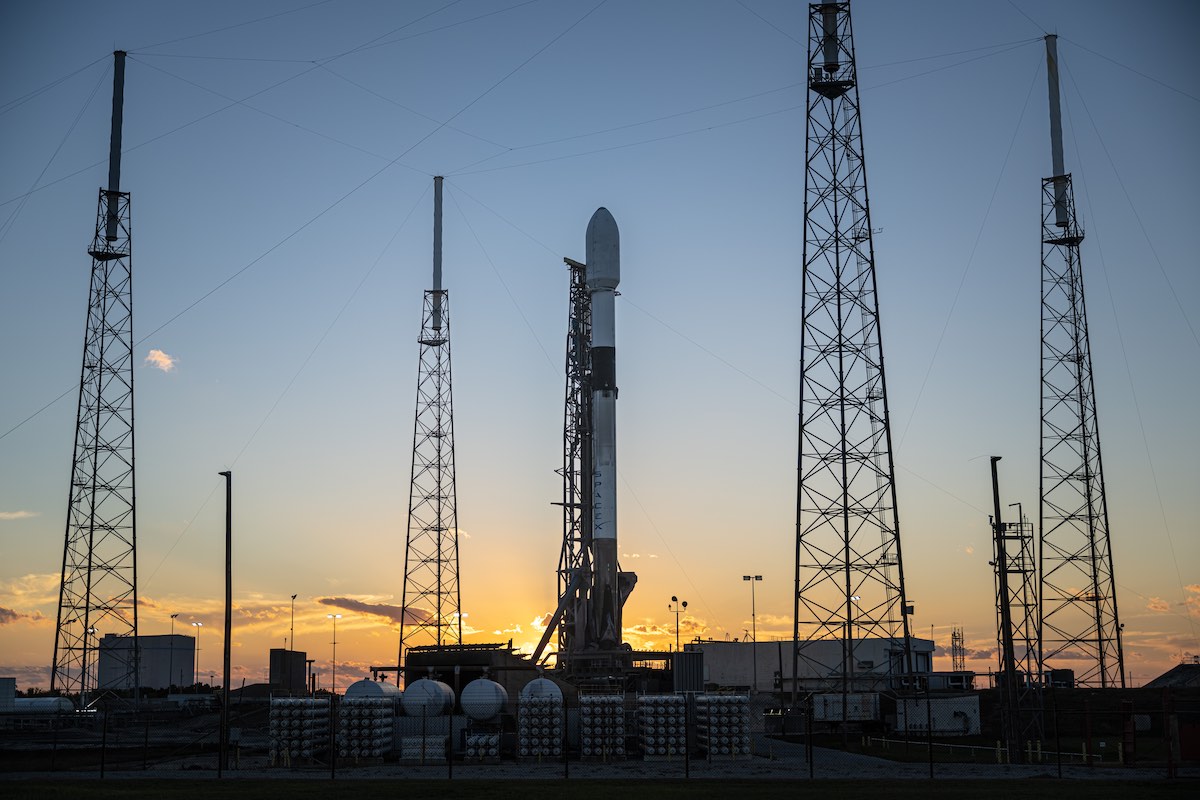With care and diligence, amateur astronomy can offer a satisfying reprieve.
The post On Burnout, the “Green Comet,” and White Dwarf Stars appeared first on Sky & Telescope.
With care and diligence, amateur astronomy can offer a satisfying reprieve.
The post On Burnout, the “Green Comet,” and White Dwarf Stars appeared first on Sky & Telescope.
Video: 00:05:36 Five-minute behind-the-scenes documentary covering the story behind the application of the Galileo tribute plaque to ESA’s Juice spacecraft.
SpaceX will try to launch its huge Starship rocket to Earth orbit for the first time next month, provided the vehicle passes its remaining tests, Elon Musk said.
The gravitational waves would be weak, but potentially detectable by the next joint observing run of the world's gravitational-wave detectors.
Live coverage of the countdown and launch of a SpaceX Falcon 9 rocket from Space Launch Complex 40 at Cape Canaveral Space Force Station, Florida. The Falcon 9 rocket will launched the the Amazonas Nexus geostationary communications satellite for Hispasat. Follow us on Twitter.
SpaceX will try again Monday to launch a Falcon 9 rocket from Cape Canaveral with Amazonas Nexus, a powerhouse satellite owned by the Spanish company Hispasat to connect trans-Atlantic airline passengers, maritime traffic, and rural communities across the Americas.
The launch was delayed from Sunday due to poor weather at the launch site, and unfavorable conditions downrange in the Atlantic Ocean, where SpaceX plans to land the Falcon 9’s first stage booster on a drone ship.
Much better conditions are forecast Monday, with a 95% chance of acceptable weather for liftoff of the Falcon 9 rocket from pad 40 at Cape Canaveral during a four-hour launch window opening at 5:32 p.m. EST (2232 GMT).

Webb is fully operational again, Rolls-Royce is building a nuclear reactor for the Moon, and the space debris worst-case scenario almost happened.
Last week was tough for James Webb Space Telescope news when we learned that NASA had taken the Near Infrared Imager and Slitless Spectrograph (NIRISS) instrument offline on January 15th. The instrument was experiencing communications errors and software delays, so NASA put the instrument into safe mode. After some analysis, they discovered that the device was hit by a galactic cosmic ray that messed up its memory. They turned it off and back on again, and it was good as new, ready for more science.
Rolls-Royce revealed new details about their micro-nuclear reactor that could provide both rocket propulsion in space and power generation at remote locations like the Moon and Mars. The reactor is being developed through a partnership with the UK Space Agency and could provide power in various scales, from “watts to megawatts.” They claim to keep the uranium fuel safe by encapsulating each particle in multiple protective layers that act as an a. containment system.






A stunning new view of the Tarantula Nebula captures turbulent clouds of gas and dust swirling between young stars.
Humanity faces greater existential threats than it did during the Cold War, according to the Bulletin of Atomic Scientists
Over over 50% of high mass stars reside in multiple star systems. But due to their complex orbital interactions, physicists have a difficult time understanding just how stable and long-lived these systems are. Recently a team of astronomers applied machine learning techniques to simulations of multiple star systems and found a new way that stars in such systems can arrange themselves.
Classical mechanics has a notorious problem known as the three-body problem. While Newton’s laws of gravity can easily handle calculations of the forces between two objects and their subsequent evolution, there is no known analytic solution when you include a third massive object. In response to that problem, physicists over the centuries have developed various approximation schemes to study these kinds of systems, concluding that the vast majority of possible three-object arrangements are unstable.
But it turns out that there are a lot of multiple-star systems out there in the galaxy. Indeed, over half of all massive stars belong to at least a binary pair, and many of them belong to triple or quadruple star systems. Obviously the systems last a long time, otherwise they would have flung themselves apart a long time ago before we had a chance to observe them. But because of the limitations of our tools we have difficulty assessing how these systems organize themselves and what the stable orbit options exist.
Recently a team of astronomers conducted tens of thousands of simulations of quadruple star systems, varying the mass and orbital distances of all the objects. They then ran the simulation outputs through a machine learning classifier to pull out general trends and categories for the structures of the stable orbits.
They found one such structure of orbits that was already familiar to old analytic techniques. This is the so-called nested triple system. You start with two stars close together orbiting around a common center of mass. Then you add a third star in a large enough orbit around those other two so that from that distance the other two might as well be a single star. Then to add a fourth star you put it at an even greater distance so it orbits around the other three.
A huge filament of solar plasma has broken off the sun's surface and is circling its north pole like a vortex of powerful winds, but scientists have no clue what caused it.
Crew-6 will head to the International Space Station after its Feb. 26 launch, but three of its four crewmembers are preparing for the next generation of missions to the moon.
February's Full Snow Moon rises on Sunday (Feb. 5) and will be the smallest full moon of the year due to the current position of the moon in its orbit.
Thirty-five new astronauts joined the corps in 1978, among them women and people of color who reshaped the agency forever, a new book shows.
An F-22 fighter jet destroyed a Chinese balloon with a Sidewinder missile on Saturday (Feb. 4) when the airship was over the Atlantic Ocean off the South Carolina coast.
SpaceX plans to launch Hispasat's Amazonas Nexus communications satellite to orbit Sunday (Feb. 5), and you can watch the action live.
"Star Wars Jedi: Survivor's" design team announced a six-week delay for the game's release, to April 28.
A team of astronomers have used a model of earthquakes to understand glitches in the timing of pulsars. Their results suggest that pulsars may have interiors that are far stranger than can be imagined.
Pulsars are perhaps the most accurate timekeepers in the entire universe. The pulsars themselves are really rapidly spinning neutron stars. Neutron stars are ultra-dense balls of atomic matter, usually no bigger than a few miles across with a mass a few times that of the Sun.
When these neutron stars spin they blast out beams of radiation that draw circles around the sky. If the Earth happens to lie on one of those circles then we see a periodic flashing from those beams of radiation, creating a pulsar.
Pulsars will keep accurate rhythm for incredibly long periods of time. But occasionally they are known to glitch, when they suddenly shift from one rotation rate to another.
Astronomers do not fully understand what causes the glitches, but recently a team of researchers put together a model of how glitches operate. The model is based on earthquakes. Earthquakes have many causes, but one of them is when too much tension and pressure builds up between tectonic plates and the crust of the Earth buckles under the pressure. That results in an earthquake and a resettling of the material in the Earth.
The island was destroyed by the same volcano that formed it seven years before.
Artist’s concept of the Amazonas Nexus satellite in orbit, with its antennas and solar arrays unfurled. Credit: Thales Alenia Space
A nearly five-ton satellite for the Spanish company Hispasat is ready for liftoff from Cape Canaveral Sunday, weather permitting, aboard a SpaceX Falcon 9 rocket, beginning a mission to provide in-flight internet and other communications services over the Americas and the Atlantic Ocean.
Hispasat’s Amazonas Nexus satellite, built in France by Thales Alenia Space, is scheduled for launch during a four-hour window opening at 5:32 p.m. EST (2132 GMT) Sunday from Cape Canaveral Space Force Station in Florida. SpaceX will deploy the satellite into an elongated “super synchronous” transfer orbit stretching more than 30,000 miles (50,000 kilometers) above Earth.
The weather forecast is iffy, with just a 30% chance of favorable weather at Cape Canaveral at the opening of the launch window Sunday. Conditions are forecast to improve later in the evening, with a 55% chance of acceptable weather at the end of the launch window.
SpaceX will also monitor wind and sea conditions a few hundred miles east of Cape Canaveral, where the Falcon 9 booster is set to land on a drone ship in the Atlantic Ocean. There’s a high risk of out-of-limits weather conditions for landing there Sunday.
Forecasters expect weather conditions to dramatically improve for a backup launch opportunity Monday evening.


It's a meeting of the GOATs this weekend when superstar green comet C/2022 E3 meets up with Capella, the Goat Star. Capella should help skywatchers spot C/2022 E3 as it races away from Earth.
All Rights Reserved. 2024. SpaceZE.com